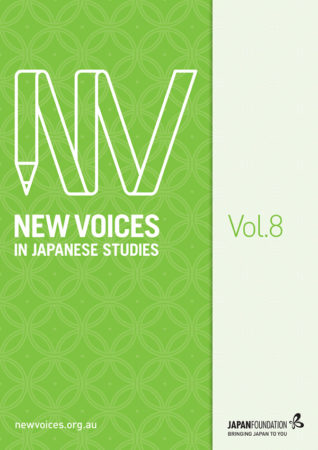
Volume 8
Published July, 2016
ISSN 2205-3166
https://doi.org/10.21159/nvjs.08
© The Japan Foundation, Sydney, 2016

In this article, I examine the use of social media by parents involved in cases of international parental abduction to and from Japan, with a focus on cases of abduction to Japan. I argue that the use of social media in these cases is a symptom of and a counter to a legal system which has been outpaced by changes in society, particularly the creation and dissolution of international families. This article discusses a number of case studies of social media usage and locates these in the context of the contemporary Japanese legal system. While not ignoring the nefarious potential of social media usage, I come to a positive assessment of its use in cases of international parental child abduction involving Japan. I also question how its utility will change over time, depending on the legal system’s ability to adapt to societal changes and expectations.
This paper presents a cultural semantic analysis of the Japanese emotion terms haji‘ and hazukashii‘, made using the methodology of the Natural Semantic Metalanguage (NSM). The paper has three aims: (i) to pinpoint the conceptions of haji‘ and hazukashii‘ as emotion terms in Japanese language and culture; (ii) to highlight the differences in meaning with their typical English translations shame‘ and embarrassing‘, and show that haji‘ and hazukashii‘ reflect two different, culture-specific emotion conceptions; (iii) to emphasise the suitability of NSM for cross-cultural comparisons of emotion terms in different languages and, in turn, for cross-cultural training. The examples adduced are taken from various sources, including a Japanese dictionary, the Kotonoha corpus of Japanese language and Japanese novels.
Japanese manga artist est em (esu to emu) is notable for blurring genre boundaries and subverting established conventions in various publications since her debut in 2006. Two of her works, Hatarake, kentaurosu! (Work, Centaur!’) and equus, focus exclusively on male centaurs in homosocial settings. Classified as shōjo (girls’) manga and BL (boys’ love’) manga respectively, these two works allow female readers to enjoy the pleasures of homoerotic subtexts and intertextual parody. This paper examines how conventions of sexuality and gender, particularly hegemonic masculinity and heterosexuality, are constructed/deconstructed in est em’s centaur manga using the framework of intertextuality, with particular emphasis on parody, pleasure and play. By placing centaurs in realistic, everyday settings, these works present a critique of Japan’s contemporary salaryman culture, while also highlighting issues of alienation and otherness that both female readers and gay men face in their daily lives.
This article examines how cinematic representations of rape can challenge the silence which surrounds the issue of rape and sexual violence in Japan. A textual analysis of two contemporary fictional Japanese films, DV: Domestic Violence [2005] and The Ravine of Goodbye [2013], was performed to illustrate how filmmakers can use narrative and cinematographic techniques to influence the viewer to reflect upon their attitudes to rape and rape victims. By examining how these two films depict rape and rape recovery, this article argues that there is discursive potential inherent within cinema to shape our imaginations and ideals about the world. But while the filmmaker can construct rape representations that encourage reflection, how the viewer decides to engage with the film has bearing on whether this potential for reflection is realised.
This paper explores the experience of angst (ikizurasa) among youth in long- term unemployment in post-industrial Japan, and proposes a model for supporting them. Currently, the dominant model for unemployment support consists of activation policies, which assume that users can identify their problems and clarify their needs in job seeking. However, for youth in situations of long-term unemployment, the effectiveness of these policies is limited. This paper argues that indirect support which focuses on (re)constructing human relationships through sharing narratives is a more effective way to help such youth mitigate their angst. In-depth interviews with two participants in a Self-Help Group for youth affected by long-term unemployment, as well as participant observations of the group, reveal how a narrative approach allowed participants to build new senses of self founded in realities shared by others. The analysis shows how these developments were crucial to helping the participants to find employment that suited their situations and needs.
Women’s access to the political sphere in Japan has been limited by structural constraints which perpetuate their roles primarily as housewives and mothers. Some women who seek to become professional politicians use these images of traditional femininity as a deliberate tactic in political campaigns to provide a culturally acceptable way for them to express their political views. This paper analyses the life of Chikage Ōgi, a Japanese politician who was once a Takarazuka actress, in order to develop a deeper understanding of the ways in which gender-role expectations restrict women’s access to opportunities throughout their life course and the pragmatic ways that women strive to achieve their goals despite this. Ōgi used the performance skills she developed during her time as an actress to enhance her political image and fulfil her political ambitions. This paper highlights Ōgi’s creativity in enacting agency in Japan’s male-dominated political sphere and demonstrates the complex ways she both upheld and subverted gender norms in order to achieve political longevity.
